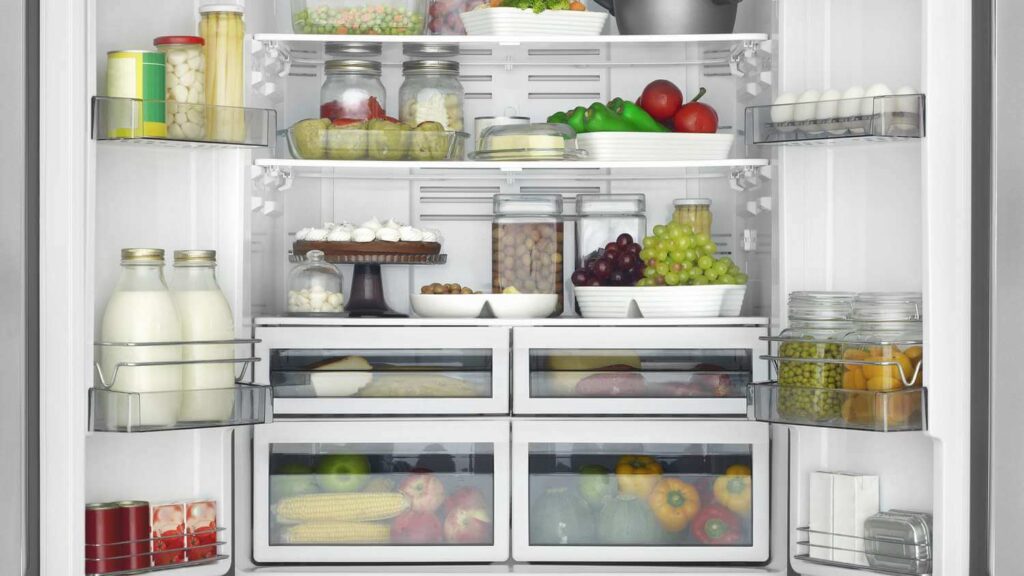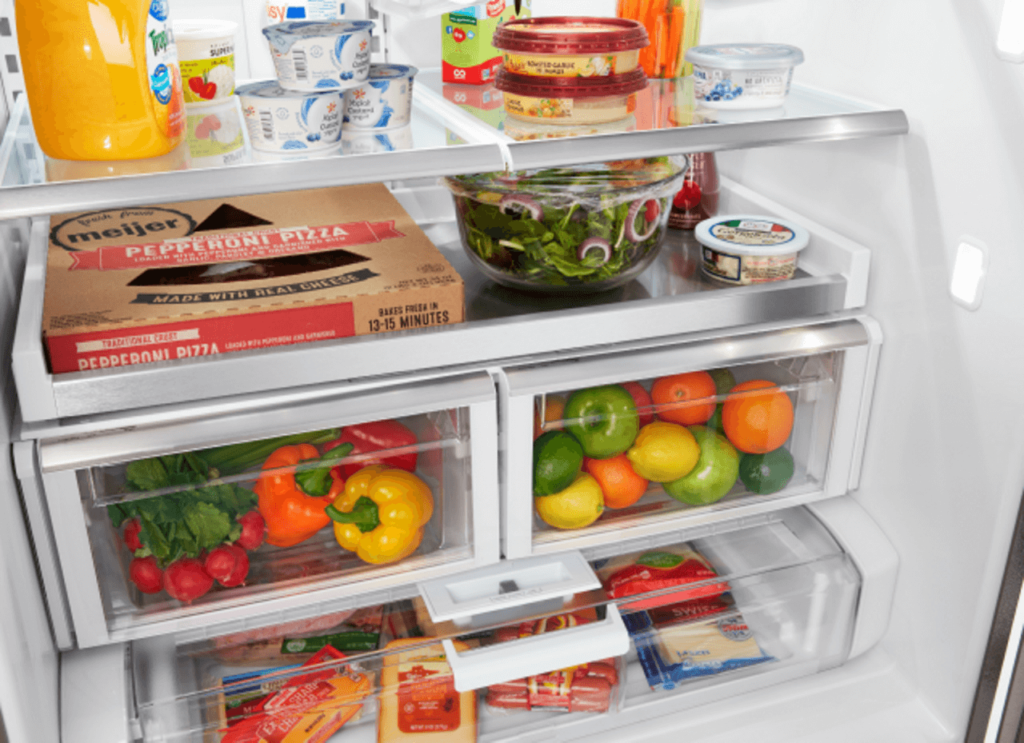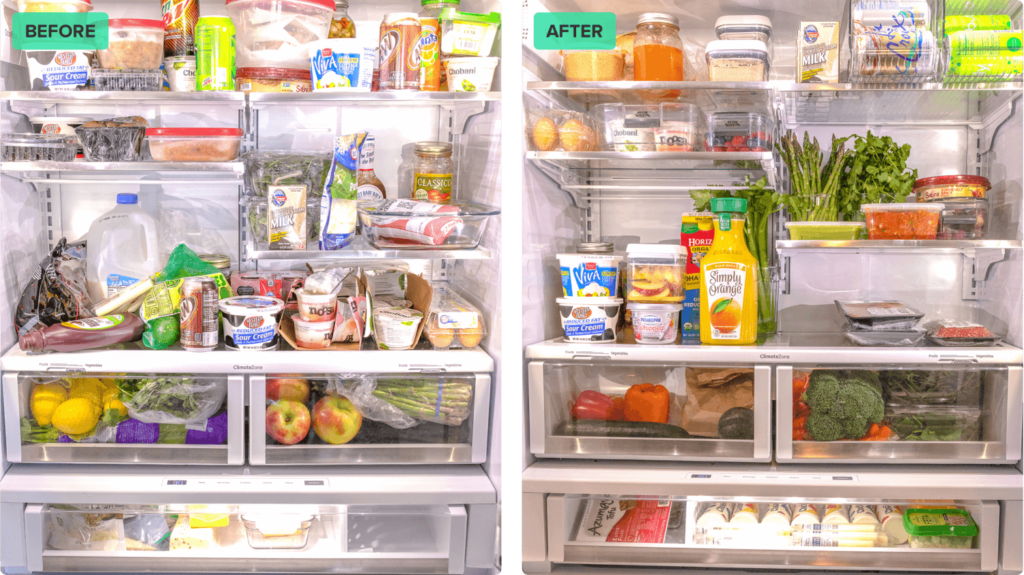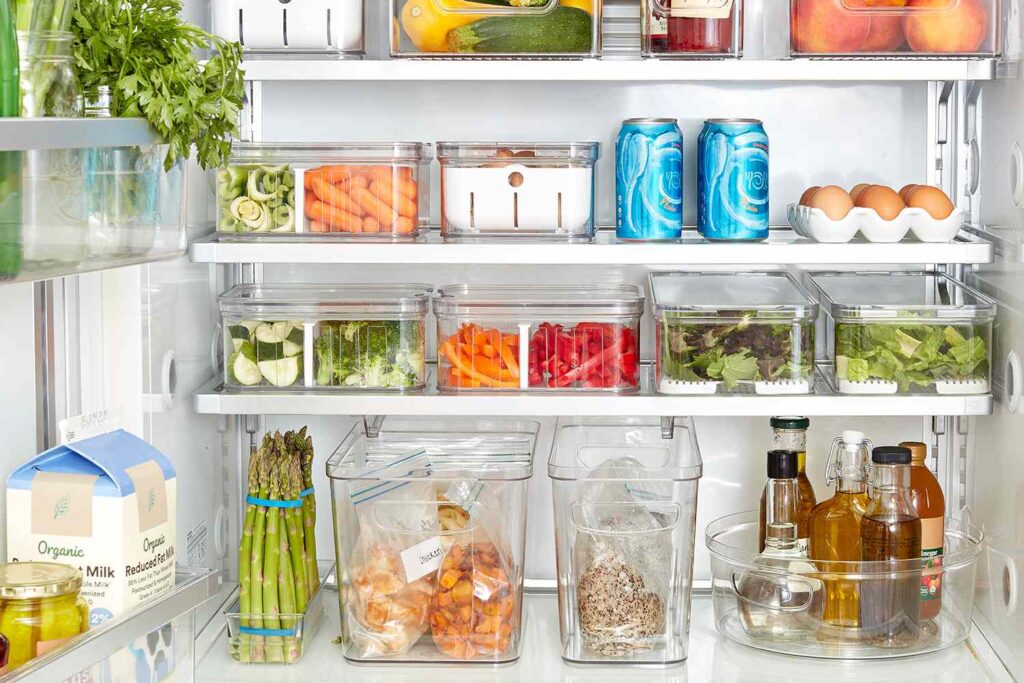
In the hustle and bustle of modern life, your refrigerator stands as the sentinel of your kitchen, guarding your precious food items from the relentless onslaught of time and the elements. It’s your food fortress, a safe haven for groceries, leftovers, and perishables. In this comprehensive guide, we’re going to delve deep into the world of refrigerator organization and maintenance, ensuring that your food stays fresher, longer.
The Art of Refrigerator Organization
Before we venture into the realm of maintaining your refrigerator for optimal performance, it’s crucial to understand why proper organization plays a pivotal role in food freshness and safety.
The Battle Against Food Waste
One of the significant benefits of an organized fridge is a considerable reduction in food waste. When your fridge resembles an archaeological dig site, with long-forgotten leftovers buried beneath heaps of containers, it’s no surprise that you might miss that expiring carton of milk or the bag of greens turning into a science experiment. Effective organization can help you keep a vigilant eye on what’s inside.
Temperature Control and Food Safety
Another key aspect of refrigerator organization is temperature control. Your fridge has various temperature zones, and knowing how to use them optimally can significantly impact the longevity and safety of your food. By placing items in the right areas, you ensure that they are stored at the appropriate temperature, preserving their freshness and taste.
Cross-Contamination Concerns
Proper organization also mitigates the risk of cross-contamination, a common cause of foodborne illnesses. By keeping raw meats and seafood separate from ready-to-eat foods and using sealed containers, you create a barrier that prevents the transmission of harmful bacteria.
Efficient Meal Preparation
A well-organized fridge facilitates efficient meal preparation. When your ingredients are neatly arranged and easy to access, you can quickly whip up a delicious dish without the frustration of searching for that elusive ingredient.
The Top Shelf: Chillin’ Like a Pro

The top shelf of your refrigerator is the warmest zone. It’s the ideal spot for items that don’t require very cold temperatures.
What Goes Here:
- Leftovers
- Beverages
- Ready-to-eat desserts
Placing items like leftovers here makes sense because they are typically consumed within a day or two. Additionally, beverages and ready-to-eat desserts are safe on the top shelf since they don’t require the colder temperatures found lower in the fridge.
The Middle Shelf: The Goldilocks Zone
The middle shelf is your fridge’s “Goldilocks zone,” with temperatures that are just right for many everyday items.
What Goes Here:
- Dairy products (milk, cheese, yogurt)
- Deli meats
- Condiments
Dairy products, including milk and cheese, tend to stay fresh in this section. Deli meats also belong here because they are usually used for sandwiches or quick snacks. Condiments find their place on this shelf because they are generally stable and don’t need the coldest environment.
The Bottom Shelf: Keeping It Cool
The bottom shelf is the coldest region of your fridge, making it the ideal spot for items that need to stay the coldest, such as raw meats and poultry.
What Goes Here:
- Raw meat and seafood
- Poultry (chicken, turkey)
- Eggs
Raw meat, seafood, and poultry should always be stored at the lowest temperature to prevent bacterial growth. This keeps your food safe and fresh.
Crisper Drawers: Veggie Heaven
Crisper drawers are a unique feature in your fridge, offering humidity control to keep fruits and vegetables fresh.
What Goes Here:
- High humidity drawer: Leafy greens, broccoli, cucumbers
- Low humidity drawer: Apples, berries, mushrooms
High humidity drawers help maintain moisture, which is essential for leafy greens, broccoli, and cucumbers. Low humidity drawers are perfect for items that require less moisture, such as apples, berries, and mushrooms.
The Door: Keep It Saucy
The door of your fridge is the warmest area, and it’s perfect for items that have natural preservatives or don’t require extremely cold temperatures.
What Goes Here:
- Condiments (ketchup, mustard, mayonnaise)
- Salad dressings
- Butter
Condiments are safe on the door because they usually contain natural preservatives like vinegar or salt. Salad dressings and butter can also withstand slightly higher temperatures without compromising their quality.
Food Storage Containers: Your Allies in Freshness
The right food storage containers are essential for maintaining food freshness. The market offers a variety of options, each suitable for different types of foods and purposes.
- Glass Containers: These are ideal for storing leftovers and meal prep items. Glass containers are airtight, easy to clean, and don’t absorb odors. They’re also safe for use in the microwave and dishwasher.
- Plastic Containers: Plastic containers are perfect for items you plan to consume quickly. Be sure to choose BPA-free containers and check that they are labeled as microwave-safe if you intend to reheat food in them.
- Ziplock Bags: Ziplock bags are versatile and great for storing soups, stews, sauces, or marinating meat. They are also useful for portioning out items for the freezer.
- Produce Bags: These breathable bags are excellent for fruits and vegetables. They help to maintain the right humidity levels, keeping your produce fresh for longer.
- Egg Cartons: Keep eggs in their original cartons to protect them from absorbing odors and flavors from other foods. The carton also helps to preserve their freshness.
Maintaining Your Refrigerator: Keepin’ It Cool

To ensure your fridge runs efficiently and your food stays fresh, you need to perform regular maintenance. Here are some key steps to follow:
- Temperature Check: Use a fridge thermometer to ensure your refrigerator maintains a temperature between 35-38°F (1-3°C). This temperature range is critical to keeping your food safe and fresh.
- Clean the Coils: Dust and debris can accumulate on the coils at the back of your fridge, hampering its efficiency. It’s advisable to vacuum these coils every six months to ensure proper airflow and cooling.
- Change the Water Filter: If your refrigerator is equipped with a water dispenser and filter, replace the filter as recommended by the manufacturer. A clogged or old filter can affect water quality and ice production.
- Defrost the Freezer: If your freezer is of the manual-defrost type, monitor it for ice buildup. When the ice layer exceeds 1/4 inch, it’s time to defrost it. Excessive ice can reduce the freezer’s capacity and make it less efficient.
- Regularly Clean and Check Seals: The door seals, or gaskets, are vital for maintaining a proper seal, which prevents cold air from escaping. Ensure that they are clean and in good condition. Over time, seals can wear out and lose their effectiveness, leading to increased energy consumption and reduced freshness.
- Avoid Overcrowding: While it’s tempting to stuff your fridge to the brim, overcrowding can obstruct airflow and result in uneven cooling. Aim for an organized and well-spaced interior to optimize freshness.
Food Safety 101: Label and Rotate
Food rotation is an essential practice to ensure you use items before they go bad. Here’s a simple system to keep your fridge contents fresh:
- Label It: Use masking tape and a marker to label containers with the date of preparation or expiration. This labeling system makes it easy to identify items that need to be consumed promptly.
- “First In, First Out” (FIFO): When you store new items, put them behind older ones. This way, you ensure that the older items are used before the newer ones, reducing the risk of food going bad unnoticed.
- Weekly Check: Set a weekly reminder to go through your fridge and assess the contents. Toss anything that has passed its prime or is showing signs of spoilage.
Troubleshooting: When Things Go South
No matter how well you maintain your fridge and organize your food, occasional issues can arise. Here are some common refrigerator problems and how to address them:
Fridge Is Too Warm
Possible Causes:
- Blocked vents
- Dirty coils
- Faulty thermostat
Solution:
- Check for blockages in the vents
- Vacuum the coils to improve efficiency
- Adjust the thermostat to a colder setting
Fridge Is Too Cold
Possible Causes:
- Freezer temperature is set too low
- Faulty thermostat
Solution:
- Adjust the freezer temperature to a higher setting
- If the problem persists, consider replacing the thermostat
Fridge Is Leaking
Possible Causes:
- Clogged defrost drain
- Damaged water line
Solution:
- Clear the defrost drain of any obstructions
- Inspect the water line for damage and replace it if necessary
Unpleasant Odors
Possible Causes:
- Spills or spoiled food
- Dirty shelves and drawers
Solution:
- Clean the fridge thoroughly, paying attention to spills and stains
- Place an open box of baking soda inside the fridge to absorb and neutralize odors
In cases of persistent or severe issues, it’s advisable to consult your refrigerator’s user manual for troubleshooting tips or contact a professional appliance technician for assistance.
Final Thoughts: Preserving Freshness, One Fridge at a Time
Your refrigerator, often taken for granted, is a vital component of your kitchen. It guards your food, preserving its freshness, and helping you create delectable dishes. By mastering the art of refrigerator organization and maintenance, you can not only reduce food waste but also elevate your culinary experience. Say goodbye to that dreaded science experiment lurking at the back of your fridge and hello to the world of fresh, flavorful ingredients. Your fridge will thank you, and your taste buds will, too!
In conclusion, remember that maintaining your refrigerator and organizing its contents is an ongoing process. Regularly revisit your organization techniques and conduct routine maintenance to keep your food fresher, longer. Your efforts will pay off in the form of delicious meals and reduced food waste.
Frequently Asked Questions (FAQ) – Refrigerator Organization and Maintenance for Food Freshness
Q1: Why is refrigerator organization so important?
A1: Refrigerator organization is crucial for several reasons. It helps prevent food waste, ensures optimal temperature distribution, minimizes the risk of cross-contamination, and makes meal preparation more efficient.
Q2: How should I organize the shelves in my fridge?
A2: Shelves in your fridge should be organized based on temperature zones. The top shelf is best for leftovers, drinks, and ready-to-eat desserts. The middle shelf is suitable for dairy, deli meats, and condiments. The bottom shelf is for raw meat, poultry, and eggs. Crisper drawers are designed for fruits and vegetables, with high and low humidity settings. The door is ideal for condiments and sauces.
Q3: What types of food storage containers are recommended for maintaining freshness?
A3: The choice of food storage containers depends on your needs. Glass containers are excellent for leftovers and meal prep. Plastic containers work well for quick consumption items. Ziplock bags are versatile for various uses, and produce bags maintain the freshness of fruits and vegetables. Egg cartons are perfect for keeping eggs fresh.
Q4: How often should I clean my refrigerator?
A4: Regular cleaning of your refrigerator is essential. A deep clean should be performed every few months. You should also wipe up spills and expired items promptly. Make it a habit to perform a weekly check to ensure freshness and cleanliness.
Q5: What should I do if my refrigerator is not maintaining the right temperature?
A5: If your refrigerator is not maintaining the correct temperature, check for blocked vents, vacuum the coils to remove dust, and adjust the thermostat. If the issue persists, consult the user manual or contact a professional technician for further assistance.
Q6: How do I prevent unpleasant odors in my refrigerator?
A6: To prevent unpleasant odors in your fridge, maintain cleanliness by wiping down shelves and drawers regularly. Store strong-smelling items in airtight containers. Place an open box of baking soda in the fridge to absorb odors.
Q7: Is there a best practice for labeling and rotating food in the fridge?
A7: Label containers with the date of preparation or expiration. Follow the “First In, First Out” (FIFO) principle by using older items before newer ones. Conduct a weekly check to identify and remove any items that have passed their prime.
Q8: Can I use my fridge for long-term storage of certain items, like wine or canned goods?
A8: Refrigerators are designed for short-term storage of perishable items. Long-term storage of items like wine or canned goods is better suited for a cool, dry pantry or a wine cellar. The low humidity and temperature fluctuations in a fridge are not ideal for these items.
Q9: Is there a recommended temperature range for the freezer?
A9: The recommended temperature range for a freezer is around 0°F (-18°C). This temperature ensures that food remains frozen and safe for extended periods.
Q10: What are the benefits of maintaining an organized and clean refrigerator?
A10: Maintaining an organized and clean refrigerator reduces food waste, improves food safety, enhances the freshness and taste of your food, and streamlines meal preparation. It also saves you money by reducing the need to replace spoiled items.
